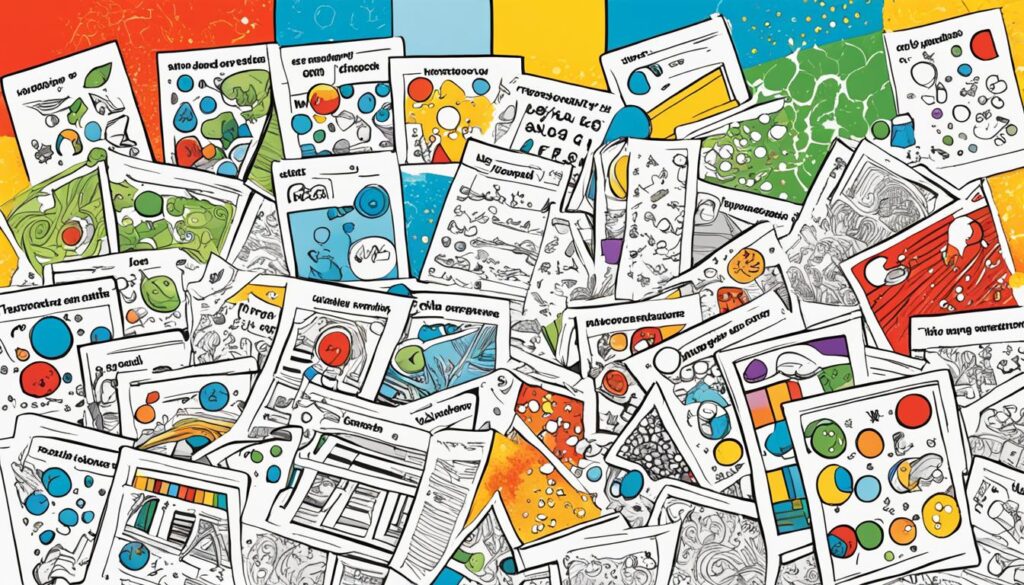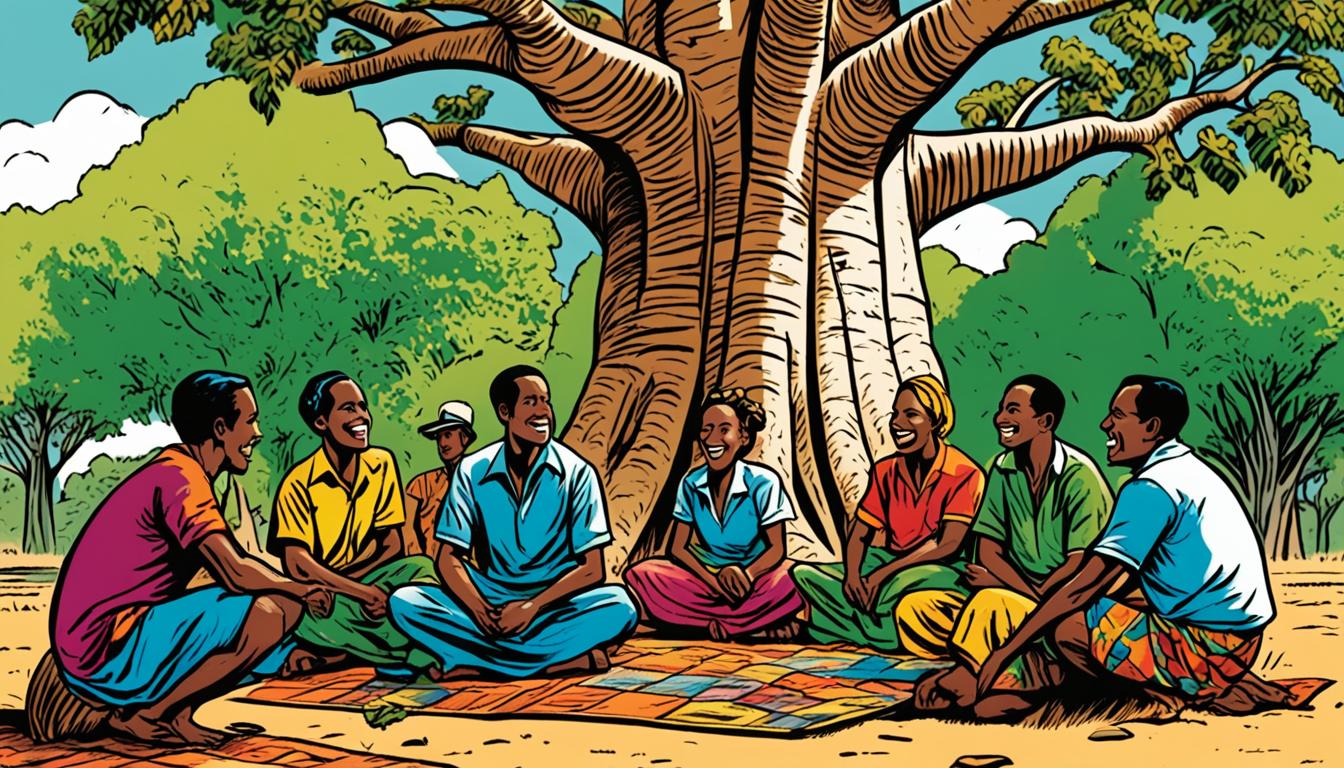Did you know that there are around 900,000 native Sena speakers in Mozambique? But that’s not all. The impact of the Sena language extends beyond its native speakers, with at least 1.5 million individuals including those who speak it as a second language. Sena is a Bantu language that holds deep cultural significance for the Sena people, its diverse dialects, and Sena culture.
Discover the fascinating world of Sena language, its linguistic features, preservation efforts, and available language resources. Join us as we delve into the vibrant Sena community, where language acts as a bridge connecting generations and preserving cultural heritage. Learn more about the Sena dialects, the cultural significance of the Sena language, and its unique place in both Mozambique and Zimbabwe.
Sena Language Learning and Community
The Sena language serves as a crucial element in the Sena community, playing significant roles in communication, cultural expression, and identity. To ensure the preservation and future vitality of the Sena language, various efforts are underway to promote Sena language learning. These initiatives aim to provide the Sena community with the necessary resources and support for language revitalization and preservation.
Language courses and educational materials specific to Sena are readily available, catering to individuals interested in learning the language or further honing their existing skills. These resources not only facilitate language acquisition but also contribute to the overall enrichment of Sena culture.
By engaging in Sena language learning, community members actively participate in the preservation of their linguistic heritage and cultural identity. Learning Sena fosters a deeper understanding and appreciation of the Sena community’s traditions, customs, and values.
“Language is the key to understanding a community’s soul and unlocking its rich tapestry of culture.”
Sena Language Learning Resources
To support the Sena community in their language learning journey, a wide range of resources are available:
- Language textbooks specifically designed for Sena learners
- Bilingual dictionaries offering translations between Sena and other languages
- Audio recordings of authentic Sena conversations and language learning materials
- Online language courses and interactive platforms
- Mobile applications that facilitate Sena language learning on the go
These resources empower individuals to learn, practice, and enhance their proficiency in the Sena language, fostering a stronger sense of community and cultural appreciation.
| Benefits of Sena Language Learning | Community Impact |
|---|---|
| Preservation of cultural heritage and identity | Strengthened linguistic bonds within the Sena community |
| Increased cultural exchange and understanding | Enrichment of Sena traditions, stories, and rituals |
| Enhanced communication within the community | Greater cohesion and unity among Sena speakers |
By embracing Sena language learning, individuals contribute to the collective efforts in language preservation and cultural sustainability, ensuring the Sena community’s unique heritage endures for generations to come.
Sena Linguistic Features
The Sena language possesses unique linguistic features, particularly in its phonology and grammar. Understanding these features is crucial to comprehending the distinctiveness of Sena as a language. Here’s an overview of the key linguistic aspects of Sena:
Phonology
In terms of its vowel system, Sena includes front, central, and back vowels. These vowels contribute to the richness and diversity of the language’s sound structure. Additionally, Sena incorporates various consonant sounds, such as labial, alveolar, palato-alveolar, palatal, velar, and glottal sounds. The inclusion of prenasalized sounds further adds to the phonetic complexity of Sena.
Grammar
Sena exhibits a range of tenses and aspect markers, which play a crucial role in expressing different temporal and aspectual meanings. These markers contribute to the linguistic versatility and expressive capacity of the language. Linguistic researchers have extensively studied and documented the tenses and aspect markers of Sena, seeking a comprehensive understanding of their usage and linguistic nuances.
“The linguistic features of Sena demonstrate the intricate phonetic system and grammatical structures that make the language unique and fascinating.”
To better illustrate the linguistic features of Sena, here is a table showcasing some of the essential vowel and consonant sounds present in the language:

This table showcases the diverse vowels and consonants utilized in Sena, providing a visual representation of the language’s phonetic inventory. It allows for a deeper exploration and understanding of the linguistic intricacies present in Sena.
Sena Language Preservation Efforts
Preserving the Sena language is of utmost importance to various organizations and initiatives dedicated to safeguarding cultural heritage. These efforts encompass a range of activities aimed at documenting the language, developing educational materials, and raising awareness among stakeholders about the significance of preserving Sena.
One noteworthy initiative is the establishment of linguistic research projects that focus on documenting and analyzing the different aspects of the Sena language. Scholars collaborate with native Sena speakers to compile comprehensive dictionaries, grammar guides, and linguistic studies that contribute to the preservation and understanding of Sena.
In addition to linguistic research, the development of educational materials plays a crucial role in Sena language preservation. These resources, such as textbooks, workbooks, and online courses, assist learners in acquiring proficiency in Sena. By providing accessible learning materials, organizations strive to encourage the acquisition and usage of the Sena language.
“Preserving Sena as a cultural heritage is essential for maintaining our identity as Sena people. We must work together to ensure the long-term vitality of our language.”
Raising awareness about Sena language preservation is another key aspect of these efforts. Various campaigns and community engagement activities aim to emphasize the importance of preserving Sena as a living language. By involving community members, scholars, and government entities, these initiatives foster a collective commitment to Sena language revitalization and safeguarding its future.
Through collaboration, awareness-raising, and the development of educational resources, the preservation of the Sena language is actively pursued. By ensuring the continuity and vitality of this culturally significant language, Sena heritage can be celebrated and passed down to future generations.
| Preservation Effort | Description |
|---|---|
| Linguistic Research | Collaborative projects with native speakers to document and analyze different aspects of the Sena language, resulting in comprehensive linguistic resources. |
| Educational Materials | Development of resources such as textbooks, workbooks, and online courses to facilitate Sena language learning and proficiency. |
| Awareness Campaigns | Engaging community members, scholars, and government entities to raise awareness about the importance of preserving Sena as a cultural heritage. |
Sena Language Resources
For individuals interested in learning and studying the Sena language, there are numerous resources available. These resources encompass a variety of formats, including textbooks, dictionaries, audio recordings, and language courses.
Textbooks: Sena language textbooks provide comprehensive linguistic resources, enabling learners to understand the grammar, vocabulary, and sentence structure of the language. These textbooks are designed to cater to learners of different proficiency levels, ranging from beginners to advanced learners.
Dictionaries: Sena dictionaries offer a valuable reference tool for learners, allowing them to explore and expand their vocabulary. These dictionaries provide translations between Sena and other languages, enriching the learner’s understanding of Sena words and concepts.
Audio Recordings: Audio recordings play a crucial role in language learning, as they help learners familiarize themselves with the pronunciation and intonation of the Sena language. These recordings may include conversations, traditional songs, and storytelling, providing an immersive linguistic experience.
Language Courses: Language courses specifically tailored for Sena learners are available, offering structured and systematic instruction in the language. These courses may be conducted in-person or online, providing learners with interactive learning experiences and opportunities to practice their language skills.
| Resource Type | Description |
|---|---|
| Textbooks | Comprehensive linguistic resources for learning Sena language grammar, vocabulary, and sentence structure. |
| Dictionaries | Reference tools providing translations between Sena and other languages, aiding vocabulary expansion. |
| Audio Recordings | Helpful for pronunciation and intonation practice, offering conversations, songs, and storytelling. |
| Language Courses | Structured instruction in Sena language, available in-person or online with interactive learning experiences. |
In addition to these traditional resources, the digital age has brought forth online platforms and mobile applications dedicated to Sena language learning. These platforms provide easy access to a wealth of Sena language resources, allowing individuals to learn and practice the language at their own pace and convenience.

Sena Language in Zimbabwe
The Sena language, specifically the Barwe dialect known as Chibarwe, holds official recognition in Zimbabwe. It is predominantly spoken by the Barwe ethnic group and exhibits unique features and variations. Chibarwe contributes significantly to the cultural diversity and linguistic heritage of Zimbabwe, enriching the country’s linguistic landscape.
“Chibarwe represents the historical significance and cultural identity of the Barwe people in Zimbabwe. Its recognition underscores the importance of preserving and celebrating the linguistic heritage of indigenous communities.”
Chibarwe, as a dialect of the Sena language, demonstrates the intricate connection between language and culture among the Barwe people. It serves as a means of communication, cultural expression, and preservation of traditional knowledge.
Sena Language in Zimbabwe
| Dialect | Official Recognition | Ethnic Group |
|---|---|---|
| Chibarwe | Officially recognized | Barwe |
The table provides an overview of the official recognition of Chibarwe and its association with the Barwe ethnic group.
The preservation and promotion of Chibarwe, along with other dialects of the Sena language, are pivotal in maintaining cultural identity and fostering linguistic diversity in Zimbabwe.
Cultural Significance of Sena Language
The Sena language holds immense cultural significance within the Sena community. It serves as a powerful medium for storytelling, preserving traditional rituals, and conveying the essence of Sena culture. The language is deeply embedded in the fabric of everyday communication, connecting people and strengthening social bonds.
“The Sena language is the heartbeat of our culture. It carries the history, wisdom, and stories of our ancestors,” says Bela Chipanda, a Sena elder.
Storytelling, in particular, plays a crucial role in the cultural preservation of the Sena people. Through the Sena language, oral traditions are passed down from one generation to the next, sharing knowledge, values, and moral lessons. These stories often revolve around ancestral heroes, mythical creatures, and the natural world, painting vivid pictures of Sena history and beliefs.
The richness of Sena culture is beautifully encapsulated in the Sena language. It is through our words and expressions that we celebrate our heritage and keep our traditions alive.
In addition to storytelling, the Sena language is intricately woven into traditional rituals and ceremonies. From birth and marriage to harvest festivals and initiation rites, the language is employed to invoke blessings, express gratitude, and invoke ancestral spirits. The rhythmic cadence and melodic tones of the Sena language add depth and emotion to these sacred rituals, creating a profound spiritual connection between the Sena community and their cultural practices.
Furthermore, the Sena language is an integral part of traditional songs and music. The vibrant rhythms and harmonies that accompany Sena songs are accompanied by lyrics that portray the joys, sorrows, and aspirations of the Sena people. Sena songs serve as a means of cultural expression, enabling individuals to celebrate their identity and communicate shared experiences. These musical traditions form a tapestry of Sena culture, embracing the language as a core component.

The Sena language is more than just a mode of communication for the Sena people—it is a reflection of their rich cultural heritage and an inseparable part of their identity. It embodies the collective wisdom, beliefs, and values that have been cherished and passed down through generations. Preserving and revitalizing the Sena language is not just an act of cultural conservation; it is a testament to the resilience and vibrancy of the Sena community.
Conclusion
The Sena language holds great significance in the cultural identity and heritage of the Sena people in Mozambique and Zimbabwe. It serves as a medium of communication, cultural expression, and preservation of traditions. Therefore, efforts to preserve the Sena language and promote language learning are crucial for maintaining the vitality of this rich linguistic heritage.
Various initiatives and organizations are dedicated to the preservation of the Sena language. They document the language, develop educational resources, and raise awareness of its importance as a cultural heritage. Collaboration between scholars, community members, and government entities is paramount in ensuring the long-term preservation of the Sena language.
There are abundant resources available for learning and studying the Sena language. These resources include textbooks, dictionaries, audio recordings, and language courses. Digital platforms and mobile applications further facilitate access to Sena language resources, making it more accessible and convenient for individuals to learn and practice the language.
Overall, the Sena language plays a crucial role in preserving the cultural identity of the Sena people. By actively preserving and promoting the Sena language, we can ensure its continuous vitality and contribution to the rich cultural tapestry of Mozambique and Zimbabwe.
FAQ
What is Sena Language?
Sena is a Bantu language spoken in the four provinces of central Mozambique: Tete, Sofala, Zambezia, and Manica.
How many native Sena speakers are there?
It is estimated that there are around 900,000 native Sena speakers in Mozambique, with at least 1.5 million including those who speak it as a second language.
What are the dialects of Sena?
Sena is spoken in several dialects, including Rue (Barwe) and Podzo.
What role does the Sena language play in the Sena community?
The Sena language serves as a means of communication, cultural expression, and identity within the Sena community.
What efforts are being made to promote Sena language learning?
There are various resources, such as language courses and materials, available to support the Sena community in language revitalization and preservation.
What are the linguistic features of the Sena language?
The Sena language has distinct features in its phonology, including its vowel and consonant systems. It also has a range of tenses and aspect markers.
What initiatives are focused on the preservation of the Sena language?
Various organizations are collaborating to document the language, develop educational materials, and raise awareness about the importance of preserving Sena as a cultural heritage.
What resources are available for learning the Sena language?
There are textbooks, dictionaries, audio recordings, language courses, online platforms, and mobile applications that provide access to Sena language resources for learning and practicing the language.
Does the Sena language have official recognition in Zimbabwe?
Yes, the Barwe dialect known as Chibarwe, which is part of the Sena language, has official recognition in Zimbabwe and contributes to the cultural diversity and linguistic heritage of the country.
How is the Sena language intertwined with Sena culture?
The Sena language is deeply intertwined with Sena culture, serving as a medium for storytelling, traditional rituals, songs, and everyday communication.
